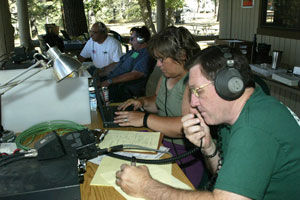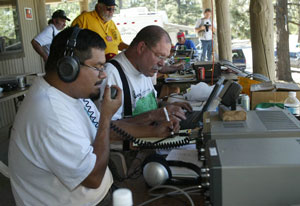 |
→ July 2004 Contents → Column
|
Radio Corner: Amateur Radio Emergency Services
July 2004
|
 |
||||||
|
Throughout the history of amateur radio communications, licensed groups of two-way radio operators have regularly proven to be a reliable backup for existing governmental communications agencies. Amateur radio groups have accomplished this by banding together and providing private-sector emergency communications whenever necessary, both locally and internationally.
In today's world, with the global shift towards fighting terrorism, the amateur radio groups have also shifted some of their emphasis and resources to this exercise. While these experienced operators have traditionally concentrated on tasks such as aiding local search/rescue efforts, support of law enforcement communications during wildfires and aircraft emergencies, and events such as the Symbionese Liberation Army incident in the 1970s, recently there has been a concentrated effort within the amateur radio community to shift into a position whereby they can assist local agencies in the event of a terrorist attack.
It is, in fact, the very mobility of the equipment that allows the operator to become an emergency radio station on the spot. Technological improvements over the last few years have resulted in the availability of newer radios which are similar in size to the short-range mobile vehicular versions, but much more powerful. By using larger antenna systems, worldwide communications can now be achieved from a vehicle relatively easily, with optimum field performance being primarily dependent upon the size and complexity of the antenna. As time goes on, Tom Ridge and those operating the Homeland Security Department should become aware of the vast number of amateur radio groups throughout the United States. They should also inform themselves of the capabilities and resources of these organizations, especially since a tie between the government and the self-sufficient amateur radio groups would undoubtedly be beneficial to the country during any emergency situation in which communications was of prime importance.
© Roger Williams KA7VOM
|
|||||||
Back to July 2004 Contents |
|

